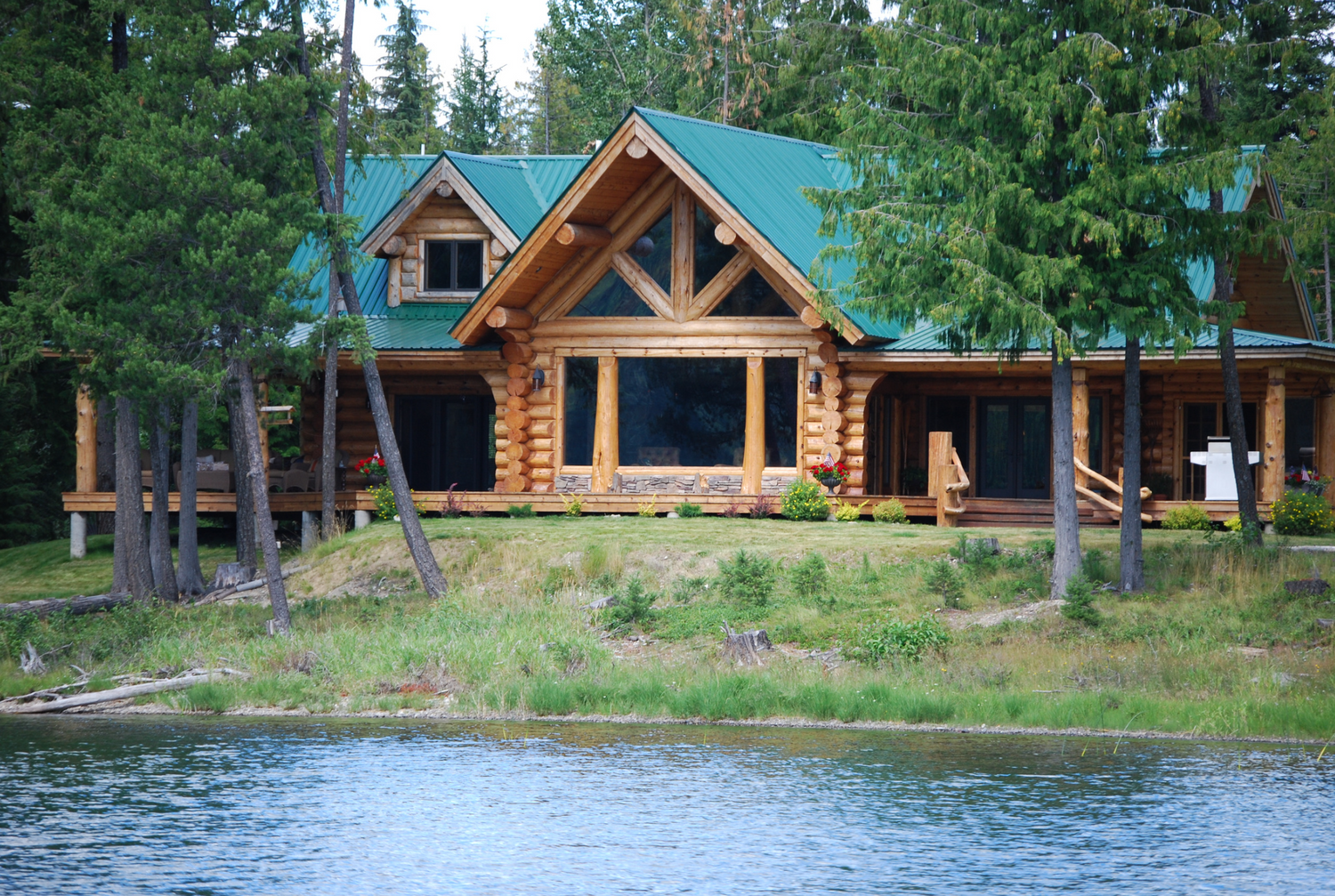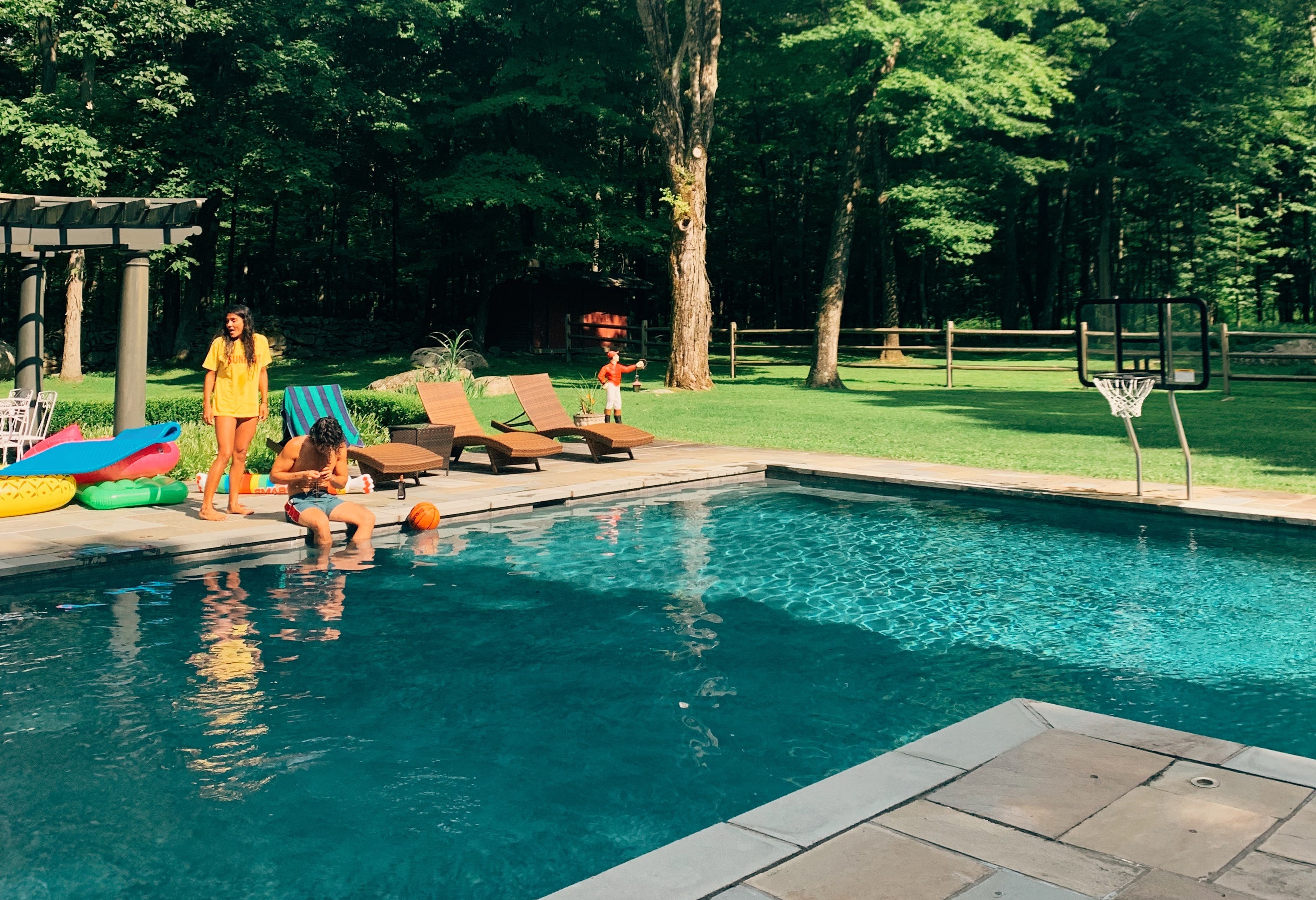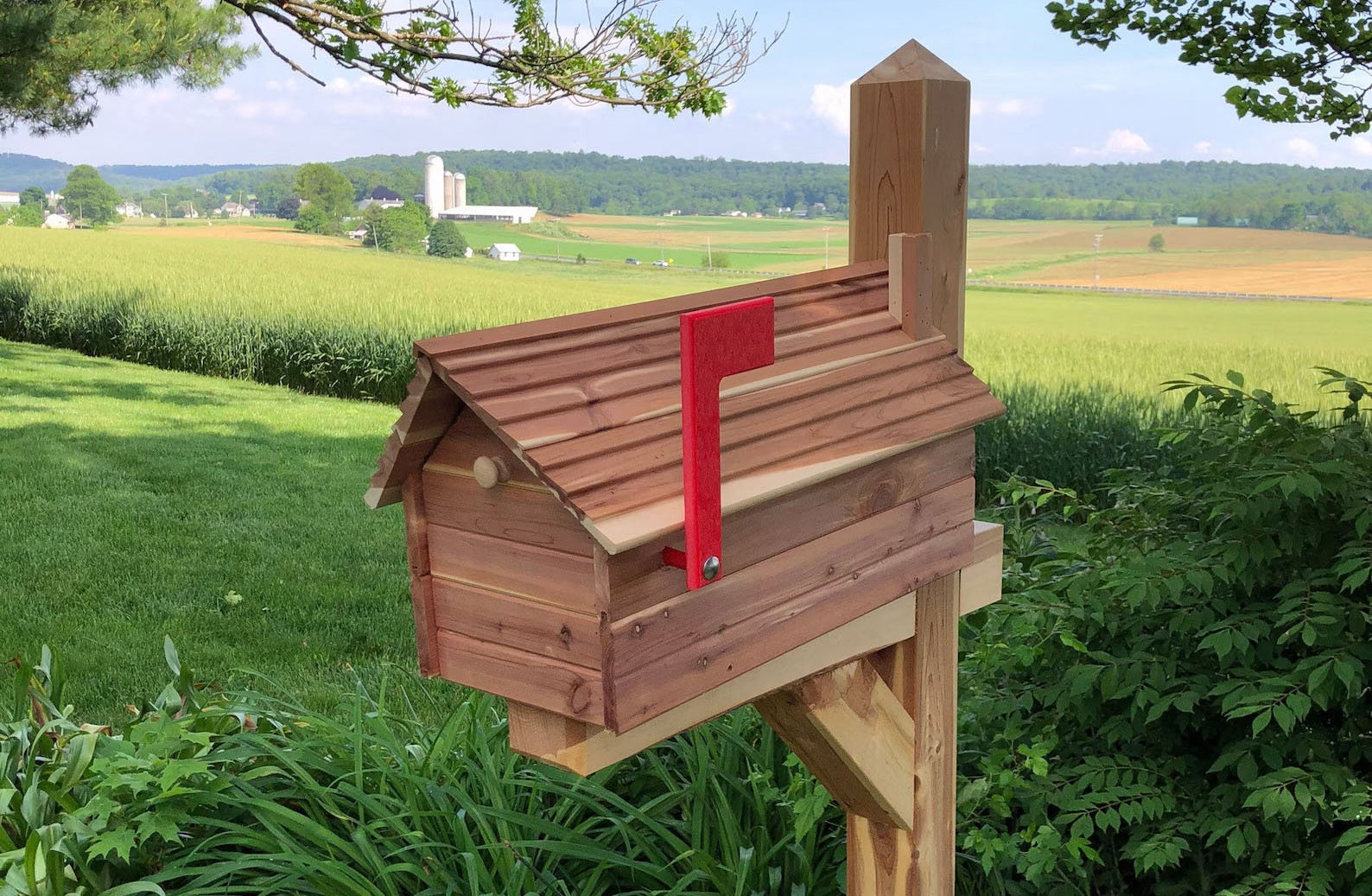How to Keep Carpenter Bees Away from Log Homes
Carpenter bees, those industrious insects that love to make their nests in wood, can wreak havoc on log homes if their burrowing activities aren’t stopped in time. These buzzing creatures possess the ability to drill perfect round holes into your log home. Over time, their relentless tunneling weakens the structural integrity of the wood, posing a threat to the longevity (not to mention the aesthetic appeal) of your property.
But fear not, log cabin homeowners! In this comprehensive article, we’ll discuss several effective strategies that will equip you with the knowledge and tools necessary to prevent carpenter bee damage and safeguard the value of your home.
Our mission is to give you the tools to guard yourself (and your log home) against the onslaught of carpenter bee damage!

Signs of Carpenter Bees
To successfully prevent carpenter bees from damaging your log home, it’s critical to familiarize yourself with the telltale signs of their activity. By learning to identify an infestation early on, you can take proactive measures to protect your log home from future damage.
So what are the signs of carpenter bee damage?
One clear indication of carpenter bee activity is the presence of perfectly round holes on the wooden surfaces of your cabin or log home. These holes, typically measuring half an inch in diameter, are the entrances to carpenter bee nests. To find out if your home already has unwanted guests, be sure to give it a thorough once-over, paying particular attention to areas such as siding, fasciae, eaves and other exposed wooden areas. The presence of these distinct holes should raise a red flag, indicating the potential presence of carpenter bees.

If you do discover any circular holes, a closer examination may reveal other evidence of carpenter bee occupation. Observe the surroundings of the holes closely, and you may notice yellowish or brownish stains. These stains are the result of carpenter bee waste, often referred to as "frass." As the bees tunnel through the wood, they expel their waste material, which can accumulate around the entry points1. The appearance of these stains further confirms the activity of carpenter bees.
It is worth noting that while carpenter bees may initially establish their nests in exposed wooden surfaces, they often extend their tunnels deeper into the wood, seeking shelter and expanding their territory2. That’s why it’s important not to rely solely on the presence of holes and stains near the surface. Regular inspections, both internally and externally, are crucial for detecting any signs of carpenter bee intrusion.
In addition to visible signs, you also want to be aware of auditory cues. Carpenter bees, particularly the males, are known for their distinct buzzing sound. Their low-pitched, reverberating hum can often be heard in the vicinity of their nests. If you notice an unusual buzzing noise emanating from your log home, it could be an indication of carpenter bee activity.
Remember, early detection is key to effectively addressing and preventing the potential damage caused by these persistent wood-boring insects. So, keep your eyes and ears open, and stay attuned to the subtle clues that carpenter bees leave behind.
Log Home Maintenance
Maintaining the beauty and integrity of your log home goes beyond aesthetics – it serves as a crucial line of defense against carpenter bees. With proper upkeep practices, you can create an environment that discourages these intruders from setting up shop in the first place.
One effective log home maintenance strategy is to consider treating exposed wood in your untreated log cabin home with preservatives, such as stains or penetrative finishes. These products not only enhance the wood's durability from the elements and fungal rot but also add an extra layer of protection against carpenter bees, as well as termites and other pests.
It’s also important to pay close attention to potential entry points that carpenter bees may exploit. Thoroughly inspect your log home, especially around windows, doors and any existing carpenter bee holes. Seal these openings diligently using a reliable caulk that is appropriate for outdoor use3. By closing off or sealing up these entry points, you create a barrier that discourages carpenter bees from infiltrating your log home. Remember, even the tiniest gaps can serve as an invitation for these persistent pests, so be sure to take your time during this step!
While proactive maintenance measures play a significant role in carpenter bee prevention, there may be instances where additional “firepower” is necessary. While Best Bee Brothers prefers to use natural solutions whenever possible, if you have persistent or serious structural damage from carpenter bees or other wood-boring insects, you may consider using insecticides.
Natural Carpenter Bee Treatments for Log Homes
The best protection against carpenter bees is prevention. If you already have a carpenter bee problem, try these three methods.

Hand Dipped Wooden Corks
When it comes to plugging existing carpenter bee holes, Best Bee Brothers offers a quick, easy, mess-free alternative to traditional caulking. Our Hand Dipped Wooden Corks provide a natural and effective solution to seal off those pesky openings that carpenter bees love to exploit.
Best Carpenter Bee Trap
Another natural and highly effective solution to prevent and treat carpenter bee infestations is our specially designed carpenter bee traps. Designed to attract and capture these wood-boring insects, our traps capitalize on carpenter bees' natural behavior and instincts. By mimicking the appearance of their preferred nesting sites, the traps entice the bees to investigate and enter. Once inside, the bees find themselves unable to escape through small openings that allow the bees to enter but not find their way out.
Learn more about how they work to mimic natural bee behavior and where to put them with our post on trap placement.
BEE-Licious Bee Bait
Best Bee Brothers' BEE-licious Bee Bait complements the use of our Best Carpenter Bee Traps by luring carpenter bees. This specially formulated bait emits an irresistible scent that mimics natural attractants, enticing carpenter bees to investigate and approach the bait. By strategically placing BEE-licious Bee Bait in your traps, you can divert the attention of carpenter bees from your log home, increasing the trap’s effectiveness and capturing more carpenter bees.
***
Safeguarding your log home against carpenter bees requires a proactive approach. Through regular log home maintenance, employing appropriate treatments and implementing preventive measures, you can significantly reduce the risk of carpenter bee damage.
For year-round tips to protect your home against carpenter bees, mosey on over to our carpenter bee prevention checklist, where we detail everything you need to know about carpenter bee prevention, no matter the season! And for more information, check out our post with Best Bee Brothers’ top tips to eliminate carpenter bees.
- Richard Houseman, “Carpenter Bees,” University of Missouri Extension, October 2014, https://extension.missouri.edu/publications/g7424.
- Christina Grozinger, Natalie Boyle and Kate Anton, “The Eastern Carpenter Bee: Beneficial Pollinator or Unwelcome Houseguest?,” Penn State Extension, March 8, 2021, https://extension.psu.edu/the-eastern-carpenter-bee-beneficial-pollinator-or-unwelcome-houseguest.
- “How to Manage Pests,” UC IPM Online, University of California Agriculture and Natural Resources, June 2014, https://ipm.ucanr.edu/PMG/PESTNOTES/pn7417.html.









Leave a comment
All comments are moderated before being published.
This site is protected by hCaptcha and the hCaptcha Privacy Policy and Terms of Service apply.